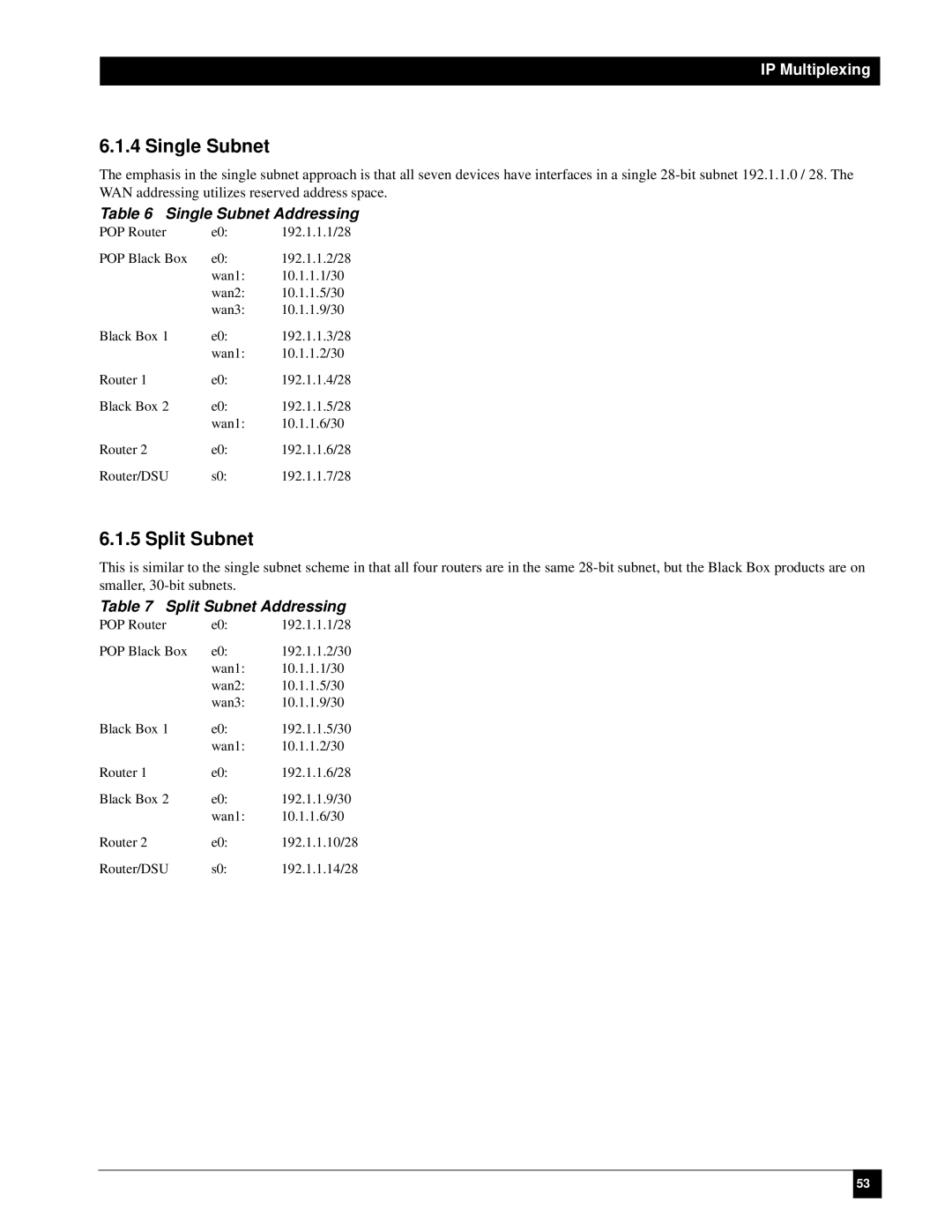
IP Multiplexing
6.1.4 Single Subnet
The emphasis in the single subnet approach is that all seven devices have interfaces in a single
Table 6 Single Subnet Addressing
POP Router | e0: | 192.1.1.1/28 |
POP Black Box | e0: | 192.1.1.2/28 |
| wan1: | 10.1.1.1/30 |
| wan2: | 10.1.1.5/30 |
| wan3: | 10.1.1.9/30 |
Black Box 1 | e0: | 192.1.1.3/28 |
| wan1: | 10.1.1.2/30 |
Router 1 | e0: | 192.1.1.4/28 |
Black Box 2 | e0: | 192.1.1.5/28 |
| wan1: | 10.1.1.6/30 |
Router 2 | e0: | 192.1.1.6/28 |
Router/DSU | s0: | 192.1.1.7/28 |
6.1.5 Split Subnet
This is similar to the single subnet scheme in that all four routers are in the same
Table 7 Split Subnet Addressing
POP Router | e0: | 192.1.1.1/28 |
POP Black Box | e0: | 192.1.1.2/30 |
| wan1: | 10.1.1.1/30 |
| wan2: | 10.1.1.5/30 |
| wan3: | 10.1.1.9/30 |
Black Box 1 | e0: | 192.1.1.5/30 |
| wan1: | 10.1.1.2/30 |
Router 1 | e0: | 192.1.1.6/28 |
Black Box 2 | e0: | 192.1.1.9/30 |
| wan1: | 10.1.1.6/30 |
Router 2 | e0: | 192.1.1.10/28 |
Router/DSU | s0: | 192.1.1.14/28 |
53
